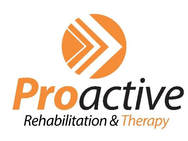Complex Regional Pain Syndrome
Complex regional pain syndrome (CRPS) is a chronic pain condition most often affecting one of the limbs (arms, legs, hands, or feet), generally (but not always) following an injury or trauma to that limb. CRPS is believed to be an autoimmune disease that develops from damage caused by the immune system to the peripheral and/or central nervous systems. CRPS is characterized by prolonged or excessive pain and mild or dramatic changes in skin color, temperature, and/or swelling in the affected area.
There are two forms, called CRPS-I and CRPS-II, with the same symptoms and treatments. CRPS-II presents as a more severe nerve injury with worse symptoms and prognosis.
The mechanisms resulting in CRPS are believed to include: Abnormal inflammatory mechanisms (glial cell activation), vasomotor dysfunction, maladaptive neuroplasticity (cortical reorganisation), and oxidative damage (cellular level damage).
http://www.bodyinmind.org/wp-content/uploads/sdarticle.pdf
http://en.wikipedia.org/wiki/Neuroplasticity
Who can get CRPS?
Anyone can get CRPS. It can strike at any age and affects women more frequently. The average age of affected individuals is about age 40. CRPS is rare in the elderly. It is also rare in children 5-10 years of age, but it is not uncommon in teenagers.
What are the symptoms of CRPS?
The main symptom is prolonged pain that may be constant and, in some people, severe. The pain may feel like a burning or “pins and needles” sensation, or as if someone is squeezing the affected limb. The pain may spread to include the entire arm or leg, even though the precipitating injury might have been only to a finger or toe. Pain can sometimes even travel to the opposite extremity. There is often increased sensitivity in the affected area, such that even light touch or contact is painful (called allodynia).
People with CRPS also experience constant or intermittent changes in temperature, skin color, and swelling of the affected limb. This is due to abnormal microcirculation caused by damage to the nerves controlling blood flow and temperature. An affected arm or leg may feel warmer or cooler compared to the opposite limb. The skin on the affected limb may change color, becoming blotchy, blue, purple, pale, or red.
Other common features of CRPS include:
The following information was derived in part from: http://www.ninds.nih.gov/disorders/reflex_sympathetic_dystrophy/detail_reflex_sympathetic_dystrophy.htm
There are two forms, called CRPS-I and CRPS-II, with the same symptoms and treatments. CRPS-II presents as a more severe nerve injury with worse symptoms and prognosis.
The mechanisms resulting in CRPS are believed to include: Abnormal inflammatory mechanisms (glial cell activation), vasomotor dysfunction, maladaptive neuroplasticity (cortical reorganisation), and oxidative damage (cellular level damage).
http://www.bodyinmind.org/wp-content/uploads/sdarticle.pdf
http://en.wikipedia.org/wiki/Neuroplasticity
Who can get CRPS?
Anyone can get CRPS. It can strike at any age and affects women more frequently. The average age of affected individuals is about age 40. CRPS is rare in the elderly. It is also rare in children 5-10 years of age, but it is not uncommon in teenagers.
What are the symptoms of CRPS?
The main symptom is prolonged pain that may be constant and, in some people, severe. The pain may feel like a burning or “pins and needles” sensation, or as if someone is squeezing the affected limb. The pain may spread to include the entire arm or leg, even though the precipitating injury might have been only to a finger or toe. Pain can sometimes even travel to the opposite extremity. There is often increased sensitivity in the affected area, such that even light touch or contact is painful (called allodynia).
People with CRPS also experience constant or intermittent changes in temperature, skin color, and swelling of the affected limb. This is due to abnormal microcirculation caused by damage to the nerves controlling blood flow and temperature. An affected arm or leg may feel warmer or cooler compared to the opposite limb. The skin on the affected limb may change color, becoming blotchy, blue, purple, pale, or red.
Other common features of CRPS include:
- skin appear shiny and thin
- abnormal sweating pattern
- changes in nail and hair growth patterns
- stiffness in affected joints
- problems coordinating muscle movement, with decreased ability to move the affected body part, and
- abnormal movement in the affected limb, most often fixed abnormal posture (called dystonia) but also tremors in or jerking of the affected limb.
The following information was derived in part from: http://www.ninds.nih.gov/disorders/reflex_sympathetic_dystrophy/detail_reflex_sympathetic_dystrophy.htm
